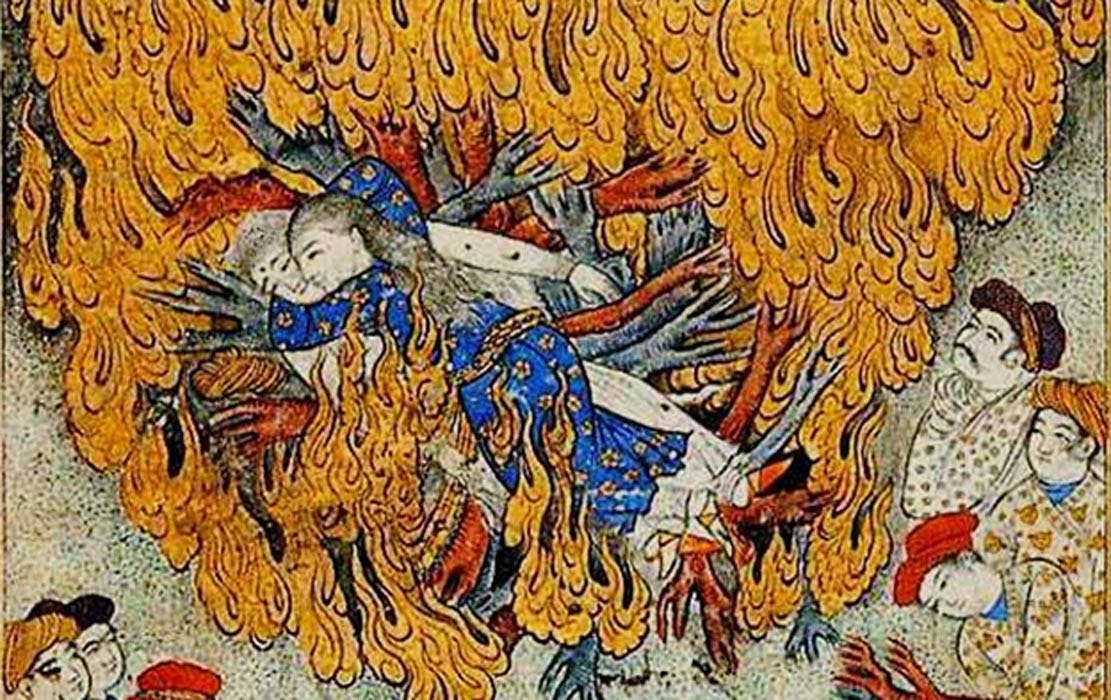Suttee: Deadly Ancient Lessons on How to be a ‘Good Wife’ and a ‘Redeemed Widow’

A poor, 60-year-old barber in rural India, who had been ill for some time, died in his simple mud hut in 2002. The next morning, his widow announced her intention to commit suttee (or sati) —the ancient practice in which a widow burns herself to death on her husband's funeral pyre.
The villagers gathered to watch as the widow calmly walked to her husband's funeral pyre and sat down on it. The crowd lit incense sticks and made offerings of coconuts and betel leaves as she cradled her husband's head in her lap. She sat on the pyre for two hours before her eldest son set light to it. As the widow keeled over in death, the villagers shouted "Sati mata ki jai" (“Long live our chaste mother.”) These were the last words she would have heard before her body was reduced to ashes.
In today's India, the practice of suttee is rarely discussed openly. It is now considered a shameful practice and has been long outlawed.
However, memorials to women who have committed suttee exist all over India and still worshipped by women who visit the shrines for help with their various problems.
We still hear rare instances of illegal practices of suttee in this modern age. There have been various reforms passed following public outcries after each instance. It is now illegal even to be a bystander at a suttee event. However, despite the existence of state and country-wide laws prohibiting the act and its glorification, these occurrences confirm that the practice has been a deeply held and cherished norm for centuries.

The Perceived Prestige of Suttee
The practice of burning or burying women alive with their deceased husbands is not exclusive to ancient India. There are accounts of widow sacrifice among Scandinavians, Slavs, Greeks, Egyptians and Chinese. The practice usually began amongst warriors or warrior clans as the heroism of the suttee was perceived as equal with that of the warrior.
Keep reading with a 7-day free trial
Subscribe to Ancient Origins UNLEASHED to keep reading this post and get 7 days of free access to the full post archives.

